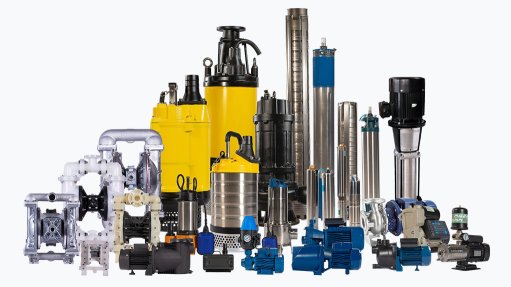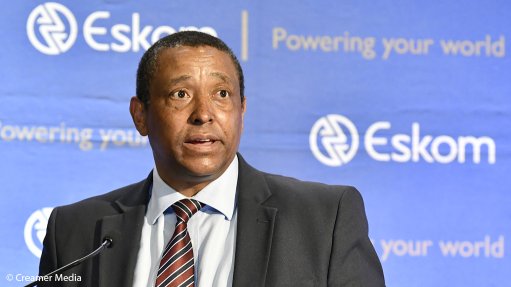Organisations need to use technologies as tools to combat fraud
Cybercriminals are using AI tools to commit a range of fraudulent crimes and, while machine learning (ML) and AI tools can help companies to detect and prevent fraud, only the active, focused use and support of these tools with data and ongoing adaptation can effectively combat fraud.
This was the message delivered by Experian decision analytics product manager Wilnes Goosen on May 21, backed by the 'Experian Fraud Report 2025' undertaken by market research company Forrester.
Of the 499 respondents to the report survey, 57% of businesses expect more fraud attacks during the current year than in the previous year. A similar percentage, or 55%, expect their fraud losses to increase in the year ahead.
The fraud threat is growing, with 53% of telecommunications company and 57% of financial services respondents reporting an increase in the volume of fraud compared with the previous year.
There is a year-on-year growth in fraud attempts, with the financial services industry seeing a high increase in app fraud linked to social engineering, he said.
There has also been a large increase in identity theft, including the use of deepfakes and synthetic data to open accounts.
“There is a gap in onboarding that fraudsters are exploiting. Companies should not rely on device profiling alone, which can be compromised or create a gap in their fraud strategies, but should combine it with behavioural biometrics.
“Additionally, for lower-grade devices, companies should ideally use a combination of behavioural analytics and orchestration, as well as using velocity rules, to ensure it is their client transacting,” he advised.
Companies can also step up authentication to verify users when necessary, and do not necessarily need to stop the process, he added.
Further, the sharing of data needs to be more proactive and real-time, as fraudsters have often opened multiple accounts before the fraud data is shared on industry platforms, Goosen said.
Of the respondents, 67% said data sharing is an effective way of identifying fraud.
“From the rest of the survey in Europe, the Middle East and Asia Pacific, businesses have seen a positive return on investment in terms of establishing consortia for fraud data sharing.
“Experian has a partnership with the UK [Serious Fraud Office] in which fraud marking and data will be shared in real-time so that other investigators have access to the fraud alert immediately.
“We, as anti-fraud practitioners, need to adopt more of these types of platforms to combat the rapid pace of these types of fraud.”
STRATEGIC USE
While various systems can help companies to combat fraud, users need to actively contribute.
“The engine needs to feed on data. Companies must not only rely on pre-trained models, but must feed their own data into their engines. Tomorrow, fraudsters will have changed their methods, and our existing rules may be out of date.
“We need to keep up, which is one of the challenges. Eighty-four per cent of the respondents agree that ML-based solutions will be critical to stay apace or ahead of fraudsters. Many also indicated that they struggle to implement ML models and often lack quality data to train their models,” Goosen said.
Introducing ML-based fraud models is the top fraud priority for the year ahead. This is owing to the critical role this technology plays across a range of essential fraud tools, and in the decision-making process that determines the final outcome.
However, the type of ML model and the data used to train it make a fundamental difference in effectiveness. Simply using ML does not necessarily guarantee an improvement in fraud prevention, the report said.
Based on the report, he recommended that companies connect multiple fraud signals as part of multilayered anti-fraud strategies.
The components include elements such as onboarding strategies and behavioural biometrics and flexible services that can be adopted in various parts of the organisation.
“Real-time monitoring of what fraudsters are doing is where we want to be. We can leverage the proactive use of tools to control the landscape and give an advantage to our customers, and not to fraudsters,” said Goosen.
However, to compete effectively against fraudsters who are increasingly leveraging new technologies, companies need access to suitably skilled and knowledgeable people who have been trained to know what to look for.
This information must then be fed back into the company's models and anti-fraud systems.
“The quality of accurate decision-making and orchestration systems are based on the quality of what feeds them. Effective orchestration allows scalability of anti-fraud solutions and intelligent management of fraud risks. We need to be scientific to stay ahead of the fraudsters,” he said.
The 2025 Fraud Report indicates that businesses expect fraud and fraud losses to increase, with many struggling to keep up in the face of generative AI and deepfake attacks.
The solution lies in orchestration and strategically adopting proactive strategies that make use of a combination of tools to empower the business to combat fraud.
With 66% of businesses planning to increase the number of fraud solutions they use in the next 12 months, orchestration has a key role to play in managing multiple fraud signals.
Including multiple fraud solutions is critical to mitigating fraud, yet connecting these different fraud signals is equally important. A fraud orchestration platform allows for individual services to be dynamically called based on the risk level, which improves fraud detection accuracy, reduces costs and enhances customer experience.
“Fraudsters are evolving and we must too,” he said.
Article Enquiry
Email Article
Save Article
Feedback
To advertise email advertising@creamermedia.co.za or click here
Comments
Press Office
Announcements
What's On
Subscribe to improve your user experience...
Option 1 (equivalent of R125 a month):
Receive a weekly copy of Creamer Media's Engineering News & Mining Weekly magazine
(print copy for those in South Africa and e-magazine for those outside of South Africa)
Receive daily email newsletters
Access to full search results
Access archive of magazine back copies
Access to Projects in Progress
Access to ONE Research Report of your choice in PDF format
Option 2 (equivalent of R375 a month):
All benefits from Option 1
PLUS
Access to Creamer Media's Research Channel Africa for ALL Research Reports, in PDF format, on various industrial and mining sectors
including Electricity; Water; Energy Transition; Hydrogen; Roads, Rail and Ports; Coal; Gold; Platinum; Battery Metals; etc.
Already a subscriber?
Forgotten your password?
Receive weekly copy of Creamer Media's Engineering News & Mining Weekly magazine (print copy for those in South Africa and e-magazine for those outside of South Africa)
➕
Recieve daily email newsletters
➕
Access to full search results
➕
Access archive of magazine back copies
➕
Access to Projects in Progress
➕
Access to ONE Research Report of your choice in PDF format
RESEARCH CHANNEL AFRICA
R4500 (equivalent of R375 a month)
SUBSCRIBEAll benefits from Option 1
➕
Access to Creamer Media's Research Channel Africa for ALL Research Reports on various industrial and mining sectors, in PDF format, including on:
Electricity
➕
Water
➕
Energy Transition
➕
Hydrogen
➕
Roads, Rail and Ports
➕
Coal
➕
Gold
➕
Platinum
➕
Battery Metals
➕
etc.
Receive all benefits from Option 1 or Option 2 delivered to numerous people at your company
➕
Multiple User names and Passwords for simultaneous log-ins
➕
Intranet integration access to all in your organisation


















